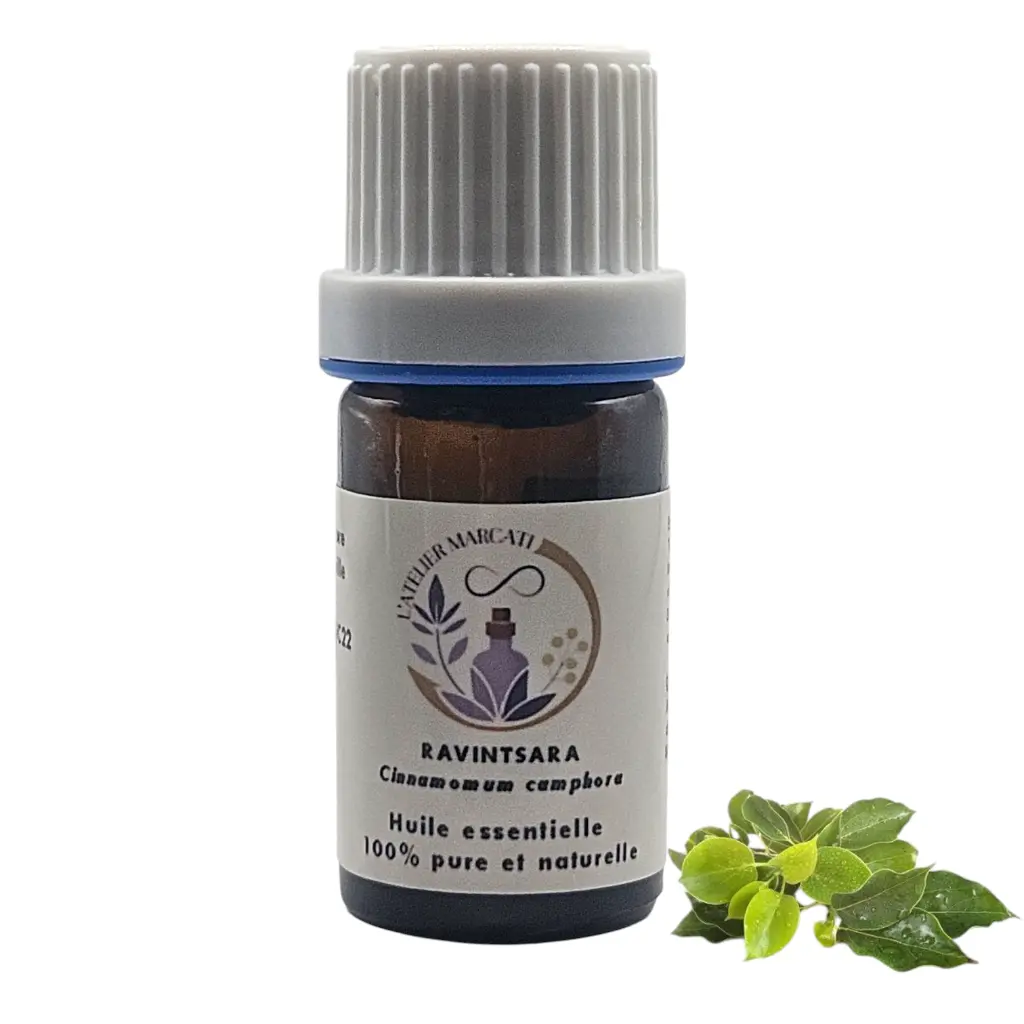Lavender essential oil
Botanical name: Cinnamomum camphora with cineole Distilled part: leaf

Chemotype and indications
Identity card
Name: Ravinstara
Botanical name: Cinnamomum camphora cineole
Distilled part: leaf
Botanical family: Lauraceae
Origin: Madagascar
Chemical composition :
- Esters: Terpenyl acetate
- Monoterpenes (27.50%), Alpha and Beta Pinene (high%), P Cymene, Sabinene (14.40%)
- Monoterpenols (13%): Alpha Terpineol (8.65%)
- Oxides: 1.8 Cineole (55.70% Majority)
- Phenols (Traces)
- Phenol Methyl-Ethers (Traces)
- Sesquiterpenes (3.80%): Beta Caryophyllene
Physical properties and therapeutic indications
- Antiseptic*
- Bactericide *
- Virucidal**
- Bronchitis*
- Whooping cough*
- Flu**
- Expectorant*
- Rhinopharyngitis*
- Sinusitis*
- Viral enteritis*
- Fatigue*
- Mononucleosis**
- Insomnia**
- Viral hepatitis*
- Herpes* and Genital Herpes*,
- Zona**+ Ophthalmologic shingles** (Caution NEVER IN THE EYES)
- Immunostimulant*, General stimulant*
- Neurotonic*
Emotional, psychic properties and therapeutic indications
- Anguish*
- Depression*
- Energizer*
- Helps with bereavement, night waking, nightmares, stress with palpitations, exhaustion, melancholy.
Additional information
Forbidden to: pregnant women - babies up to 3 years
Legend: * powerful, ** very powerful; *** extremely powerful (power value for the associated pathology)
Reference and bibliographic source: Lily BAYER and Dr Hervé STAUB, (2013) "In-depth Treatise on Phyto and Aromatherapy", Ed. Grancher. p. 632. AROMATHERAPY
INDICATIONS AND THE USE OF ESSENTIAL OILS DO NOT CONSTITUTE A MEDICAL DIAGNOSIS AND DO NOT REPLACE THE ADVICE OF A DOCTOR OR MEDICAL TREATMENTS



